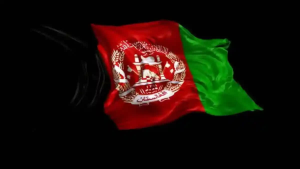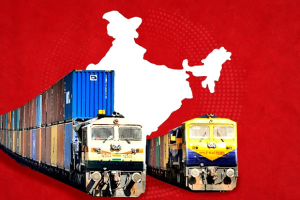Introduction: Operation Safed Sagar was the codename assigned to the Indian Air Force’s strike to support the Ground troops during Operation Vijay that was aimed to flush out Regular and Irregular troops of the Pakistani Army from vacated Indian Positions in the Kargil sector along the Line of Control. It was the first large scale use of airpower in the Jammu and Kashmir region since the Indo-Pakistani War of 1971.
Ground operations
- Initial infiltrations were noticed in Kargil in early May 1999. Because of the extreme winter weather in Kashmir, it was common practice for the Indian and Pakistan Army to abandon forward posts and reoccupy them in the spring. That particular spring, the Pakistan Army reoccupied the forward posts before the scheduled time not only theirs but also which belonged to India, in a bid to capture Kashmir.
- By the second week of May, an ambush on an Indian army patrol acting on a tip-off by a local shepherd in the Batalik sector led to the exposure of the infiltration. Initially with little knowledge of the nature or extent of the encroachment, the Indian troops in the area initially claimed that they would evict them within a few days.
- However, soon reports of infiltration elsewhere along the LoC made it clear that the entire plan of attack was on a much bigger scale. India responded with Operation Vijay, a mobilization of 200,000 Indian troops. However, because of the nature of the terrain, division and corps operations could not be mounted; the scale of most fighting was at the regimental or battalion level.
- In effect, two divisions of the Indian Army numbering 20,000, along with several thousand from the Paramilitary forces of India and the air force were deployed in the conflict zone. the Indian Army moved into the region in full force.
- Soon, the intruders were found to be well entrenched and while artillery attacks had produced results in certain areas, more remote ones needed the help of the air force.
Air operations
- The Indian Air Force (IAF) was first approached to provide air support on 11 May 1999 with the use of helicopters.
- On 21 May 1999, a Canberra on a reconnaissance mission was hit by ground fire. The flight was however, recovered safely, and returned to base on one engine.
- On 25 May 1999, the Cabinet Committee on Security authorized the IAF to mount attacks on the infiltrators without crossing the LoC.
- Initial indications from the government to the IAF was to operate only Attack helicopters. However, the Chief of Air Staff put forth the argument that in order to create a suitable environment for the helicopters, fighter action was required.
- On 26 May 1999, the go-ahead was given and the IAF started its strike role. Flying from the Indian airfields of Srinagar, Avantipur and Adampur, ground attack aircraft MiG-21s, MiG-23s, MiG-27s, Jaguars and the Mirage 2000 struck insurgent positions.
- The first strikes were launched on the 26 May 1999, when the Indian Air Force struck infiltrator positions with fighter aircraft and helicopter gunships.
- The initial strikes saw MiG-27s carrying out offensive sorties, with MiG-21s and (later) MiG-29s providing fighter cover.
- Mil Mi-17 gunships were also deployed in the Tololing sector.
- Srinagar Airport was at this time closed to civilian air-traffic and dedicated to the Indian Air Force.
Losses Incurred on our side:
- However, on 27 May 1999, the first fatalities were suffered when a MiG-21 and a MiG-27 jets were shot down over Batalik Sector by Pakistan Army. The following day, a Mi-17 was lost- with the loss of all four of the crew- when it was hit by three Stinger missiles while on an offensive sortie. These losses forced the Indian Air Force to reassess its strategy. The helicopters were immediately withdrawn from offensive roles as a measure against the man-portable missiles in possession of the infiltrators.
What happened next:
- On 30 May 1999, the Indian Air Force called into operation the Mirage 2000 which was deemed the best aircraft capable of optimum performance under the conditions of high-altitude seen in the zone of conflict. Armed initially with 250 kg “dumb” bombs, No.7 Squadron over three days, struck infiltrator positions in Muntho Dhalo, Tiger Hill and Point 4388 in the Drass Sector.
- The strikes on Muntho Dhalo on 17 June also destroyed logistics and re-supply capabilities of the infiltrators in the Batalik Sector. Through the last weeks of June, the Mirages, armed with LGBs as well as with “dumbs”, repeatedly struck the heavily defended Tiger Hill.
- The choppers used were Mi-8 and the Mi-17. The transport planes were Avro, An-32, and IL-76.
- On May 27, 1999, the IAF had sent a MiG-27 on a photo reconnaissance mission over the Indian side of the Line of Control in Kashmir. Pilot ejected from MiG-27 after an engine flameout due to Pakistani retaliation.
- The next day the Air Force lost an Mi-17 Helicopter to a shoulder fired missile near Tololing, killing the crew of four. This resulted in a change in strategy and technology.
- With the Israelis providing around 100 Laser-guided bomb kits to the Indian Military, the air force chose to make maximum use of this and retaliated with regular sorties on Pakistani occupied bunkers.
- The aircraft operated at 10,000 meters AGL (33,000 feet above sea level), well out of MANPADs (Man-portable air-defense systems) range, leading to a drop in the accuracy rate of the bombs.
- The low number of airstrips for take-off and landing of the flights also constrained the efficiency of the attacks. Despite this, there were hundreds of sorties on the intruders with no further material or personnel casualties enabling a gradual takeover of the mountain posts by Indian troops.
- According to IAF the “air strikes against the Pakistani infiltrators, supply camps and other targets yielded rich dividends.”
- By July 1999 all the remaining intruders had withdrawn, and the operation was ended, being declared a success by the IAF in having achieved its primary objectives.
- However there has also been criticism of the methods initially used and the type of planes being unsuitable to the terrain that resulted in early losses. This is believed by many in the air force as coming as a wakeup call to upgrade the aging fleet of craft (especially the attack aircraft and helicopters) to better enable them to fight in the mountainous region.
- But, in the context of the war and in light of the poor information available on the infiltrations, the Indian Air Force was able to coordinate well with the Army and provide air support to the recapture of most the posts before Pakistan decided to withdraw its remaining troops.
Conclusion
Operation Safed Sagar, as the air operation in the Kargil area was called, was indeed a milestone in the history of military aviation. This was the first time that air power was employed in such an environment. Fighters as well as armed helicopters carried out many hundreds of sorties against the armed intruders who had infiltrated into the Indian Territory. The use of air power in this theatre was instrumental in accelerating the end of the conflict to India’s advantage. IAF’s air strikes against enemy supply camps and other targets yielded rich dividends. A noteworthy fact is that there was not a single operation on ground that was not preceded by air strikes, each and every action was a result of coordinated planning. The enemy was kept off the backs of the Indian Army. In the area of interdiction of enemy supplies, the successful and incessant attacks on the enemy’s logistic machines, over the weeks, culminated in a serious degradation of the enemy’s ability to sustain them.
Also Read:


















